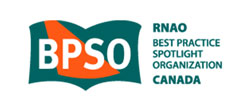A Heart-Healthy Diet for Managing Heart Disease


If you, along with 1.3 million Canadians, have been diagnosed with heart disease, good nutrition is essential to managing symptoms and preventing complications. Healthy eating, coupled with an active lifestyle, can stop or even reverse the effects and help you take control of your recovery. Eating for your heart will help reduce blood pressure and cholesterol, manage body weight and control blood sugar.
February is Heart Month and we asked Janet Chippin, Registered Dietitian at VHA Home HealthCare, to share some strategies for making heart-smart choices. Whether you want to improve heart health and lower your risks, or are living with cardiovascular disease, Janet suggests to:
Up your fruits and vegetables. Brightly coloured fruit and vegetables are loaded with antioxidants, vitamins and fibre to help maintain a healthy weight and lower blood pressure. Keep washed and chopped veggies in the fridge, put a bowl of fruit on the counter and cook vegetarian dishes to get the recommended seven to 10 servings per day.
Add good fats. Although fats have a bad reputation, not all of them are unhealthy. In fact, some fat is important in both our food and bodies. Try to avoid trans fats found in snack, fast or fried foods, and limit your intake of saturated fats in whole-fat milk products and red meat. These fats can raise your bad (LDL) cholesterol and lower good (HDL) cholesterol levels. Oily fish like salmon, trout, tuna and mackerel and flaxseeds, avocados, olive oil, nuts and seeds are all good sources of omega fatty acids.
Watch the salt. Salt helps balance fluids in your body, but most people consume two to three times the daily recommended amount. If you have heart disease, salt is a big no-no. It’s found in alarming amounts in processed foods, most canned goods and some condiments like soy sauce. Start reading nutrition labels to make low sodium choices. Cook at home with fresh ingredients and try using herbs, spices, garlic and lemon to boost flavors. Your taste buds will adjust and you’ll start to want less salt.
Choose lean protein. Eat good-quality protein every day and balance animal, fish and vegetable sources. Aim to eat two servings of fish every week and include lean meats, legumes, eggs and low-fat dairy products in your meal planning. Protein-rich beans, peas and lentils are great meat alternatives with less fat, high fibre and no cholesterol.
Pick the right carbs. Unlike processed grains with added sugar and salt, unrefined whole grains offer fibre, protein, vitamins and antioxidants. Choose brown rice, whole wheat bread, oatmeal and adventurous grains like barley, quinoa and bulgur more often.
Limit your sugar intake. Foods high in added sugar are processed by your body very quickly, and offer little nutritional value. They make your blood sugar spike (then drop), and the extra calories are converted to fat. Instead, eat three meals a day with healthy snacks that are low in added sugar. This will keep blood sugar levels consistent and cut down on bad food choices driven by hunger.
Control your portions. How much you eat is just as important as what you eat. Overloading your plate, taking seconds and stopping when you feel stuffed usually means you’re eating too much. To keep your portions in check, use smaller plates or bowls and be mindful of how you fill the space. One serving of pasta is about the size of a hockey puck and a serving of meat or fish should be the size and thickness of a deck of cards. Always aim to fill half your plate with colourful vegetables. Serving size is a learned skill, so you may need to use measuring cups or a scale until you’re comfortable with your judgment.
Eating for your heart means lean-protein, healthy fats, whole-grain carbohydrates and limited salt and sugar. While it can be overwhelming, it’s a good strategy to focus on what you can eat and not what’s off-limits. “Over time, making a number of small changes can add up and make a big difference in your health,” says Janet. By following these tips, you can manage your disease, improve your quality of life and even reverse existing damage.



